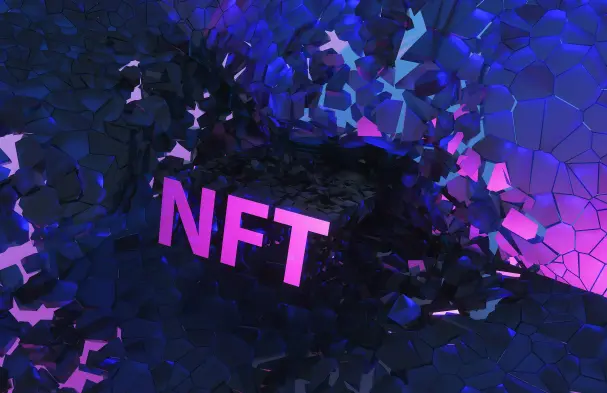A Review of Interesting Strategies in Web3 Marketing in 2022
Author: CM, Crypto Oasis
In Web3, innovation is always the best marketing. Especially at this stage, where things are still vague and chaotic, only some areas are beginning to show promise.
There are many dimensions of innovation, including technical logic, product design, and marketing strategies. The author primarily engages in operations, and below I will mainly review some interesting strategies observed in 2022 from the perspectives of "decentralized thinking," "Token distribution," and "community building."
1. Blur ------ Cleverly Utilizing the Uncertainty of Early Tokens
If airdrops are one of the best ways to onboard new users, I believe no one would disagree. However, as the industry evolves, some outdated airdrop methods have lost their appeal:
Method One: Similar to Uni, ENS, Dydx, and Hop, where airdrop information is not disclosed before the event, players can only guess and rush to participate. In the end, the project team still has to do a laborious job of screening for opportunists. Projects like ENS can turn a blind eye, but for projects like Hop, they cannot afford not to check, leading to potential negative feedback.
Method Two: Clearly informing players about an airdrop, which makes them even more eager to participate. This method has two subdivisions: one is vaguely indicating that there will be an airdrop without specifying the amount, and the other is clearly stating the percentage of the airdrop. Regardless of the subdivision, after a certain level of participation, there will be concerns about the dilution of rewards, as there are simply too many participants. On-chain data is visible, and in the end, the amount of tokens received may be minimal.
Both situations share a common issue: during the participation process, there is no positive feedback, and motivation wanes. We all know that players participating in data brushing for airdrops can increase data and boost hype for the project, creating a tacit collusion.
So, how can we ensure benefits while minimizing drawbacks?
Enter Blur!

The logic of obtaining airdrops in Blur:
(1) Contribute ------ (2) Earn Points ------ (3) Exchange for Blind Boxes ------ (4) Exchange for Tokens
Inviting friends (with a secondary level) and bidding are both contributions that earn corresponding Points, which can be exchanged for blind boxes. Boxes of different rarities contain different amounts of platform tokens (and perhaps other surprises).
Next is the key point:
We see that from (1) to (2) is uncontrollable, meaning points can be given freely as long as the established rules are followed.
However, from (2) to (3) is controllable; the specific number of points required to exchange for a blind box can be determined by the project based on the total number of points and the number of holders. This is also one of the reasons for the tiered distribution of airdrops, as different tiers can have different exchange ratios.
From (3) to (4) is also controllable; the number of tokens in an uncommon/rare/legendary box is currently unknown, and the project can ultimately decide the airdrop ratio based on the total number of blind boxes issued and the number of participants.
So, what are the benefits of Blur's strategy?
- Positive feedback; participants earn points, and players know that points can be exchanged for blind boxes.
- On the surface, it clearly informs players about the airdrop, but the final amount of tokens distributed can be determined through the previously mentioned controllable steps. For example, if the project initially sets the airdrop amount at 5%, but the number of participants is too high, can it give 8%? Absolutely, or conversely, if there are not many participants, the project can reduce the airdrop.
- Fully leverage the dual uncertainty of Tokens and blind boxes, creating a dynamic interplay between player expectations, project valuation, and project data.
2. Shit NFT ------ Three-Dimensional Nesting Dolls
First, we must acknowledge the positive significance of nesting dolls. As the saying goes, "You can't eat a big fat man in one bite." If you want to build your own metaverse, achieving it step by step through nesting dolls is a good choice for orderly expansion.

In NFTs, we often see that holding NFT A can grant airdrop or mint whitelist for NFT B, and later there may be airdrops of fungible tokens for holders of both A and B, like BAYC.
It's somewhat like a trumpet?
However, the nesting of Shit NFTs is much more interesting than that.
In the Shit Universe, there are many assets, including the first generation of Shit NFTs, Shit Monsters, pixelated shit, toilet brushes, Shitcoins, etc. Through synthesis, airdrops, self-minting, and marketplace purchases, these assets intertwine in a three-dimensional manner, sometimes moving up and sometimes down.
3. XEN ------ A New Paradigm of Fair Distribution
How to define Fair Launch, I have not yet thought of a clear definition.
However, it generally has some characteristics:
- Initially, everyone receives the same price, with no rounds of distribution.
- Anyone who wants to participate has the opportunity to do so.
- The distribution process is decentralized.
Representative projects include People, YFI, SHIB, etc.
But even with the aforementioned fair distribution, it cannot withstand the financial advantages of whales.
Thus, XEN designed a fair distribution paradigm that is unrelated to the amount of funds invested.

This is the distribution formula, which simply integrates important dimensions such as time (when participants join, self-selected mining time) and the number of participants (how many more will join later) for distribution.
Fairness is reflected in:
- 0 cost (everyone pays the same price, with no price advantage)
- Time is fair
- The number of participants is visible to everyone
4. Goblintown ------ Shaping Community Boundaries
Goblin has too many quirky operations, and my understanding is limited, so I can only analyze a few aspects from the community dimension.
A major task in community building is shaping boundaries. These boundaries can be tangible or intangible, or somewhere in between. Tangible boundaries include the surroundings, while intangible boundaries include culture. Culture may sound abstract, but it can be simply understood as "we are different" — different avatars, different slogans, different language styles, different fonts, etc.
Goblin has taken this idea to the extreme.

Ugly PFPs, unique text styles, deliberately lowering their voice during Twitter Spaces…
These practices help the community quickly establish a sense of identity, collectivity, and presence, especially a sense of collectivity.
5. Gobblers ------ Art and Ponzi
In the combination of NFT and FT gameplay, the identity attributes of NFTs are suitable for qualitative tasks, such as allowing only holders of certain NFTs to mine or govern, while the granularity of FTs is suitable for quantitative tasks, such as rewarding different amounts of tokens based on different contributions.
Guided by this thinking, Gobblers designed an innovative gameplay of GOO + VRGDA based on (3,3), keeping NFTs and FTs in a snowballing game.
It is worth mentioning that (3,3) is just (3,3), focusing on a stable narrative, and its tokens can only circulate within their own system (although Olympus Pro provides some scenarios, they are still relatively weak).
Art Gobblers has effectively created a circulation scenario for GOO, with a business logic that is sufficiently self-consistent.
So for Art Gobblers------
The creation and consumption of art is the body, responsible for accumulating value;
Finance (more accurately, Ponzi) is the wings, responsible for igniting the market through speculation.
6. Space ID ------ Operational Rhythm
The notable aspect of Space ID is not its innovative gameplay or product features, but its mastery of operational rhythm. Mastering operational rhythm is not an easy task; it requires combining product characteristics, operational planning, user needs, and market conditions. How to allow users to enter in an orderly manner, how to gradually stimulate community emotions, and ultimately how to trigger market explosions — Space ID provides us with a demonstration.

7. Dr. Ji ------ Creating an "Enemy"
As mentioned earlier, a major principle in community building is establishing boundaries, with the goal of fostering a sense of collectivity. There are many methods to create this sense of collectivity, and Dr. Ji uses the strategy of creating an enemy.
By shaping an external enemy, internal community members unite against it, raising emotions and forming a shared memory within the community. Key phrase: shared memory. Taking this opportunity, the project team recruited a group of guards; since they are guards, it implies that the project is the weaker party, as the weak need protection. While others pamper their fans, here it guides players to pamper the project. Showing strength while appearing weak.
(Of course, the idea of creating an enemy is my speculation; perhaps it is indeed the case.)

8. RSS3 ------ Higher-Level Operations are Educative
The first airdrop of RSS3 was unremarkable, but the second airdrop received a lot of praise. The news only vaguely mentioned that it was based on the on-chain interactions of token holders and the feedback from those who received the airdrop, mainly checking whether the first airdrop was sold; those who did not sell could continue to claim.
Setting aside the surprises, RSS3 subtly completed an education for users, a kind of moral teaching.
9. Readon ------ Combining Hot Topics for Traffic
In Web2, we often see many companies leveraging hot topics for marketing, but in Web3, this often proves ineffective. The reason is that while Web3 may not be large, hot topics are never-ending. Creating a few posters or continuing a few jokes based on hot topics does not attract Web3 players; what players want is the ability to participate.
However, there is a type of marketing that can be fully combined, such as leveraging the popularity of SBT for marketing.
Readon clearly seized this low-cost opportunity to attract traffic.

10. Degods ------ Innovative Token Distribution
Degods is a project on SOL (recently migrating partially), and its price has been skyrocketing. It has a mechanism for issuing fungible tokens, which involves floor sweeping mining, yielding different proportions of token rewards.
11. Starbucks Odyssey Event ------ On-chain and Off-chain, Online and Offline
Through Starbucks' Odyssey event, we can glimpse the future marketing strategies of physical enterprises combining with Web3, which will likely include:
Offline + Off-chain ------ Consumption, check-ins, or other contributions to earn fragments or certain credentials.
Online + On-chain ------ Fragments or other credentials exchanged for NFTs.
Online + On-chain ------ NFTs circulate fully, expanding the reach.
Offline + Off-chain ------ Holding NFTs can earn consumption discounts or participate in specific gatherings.
12. Cult ------ Anonymity for a Reason
Cult has many interesting aspects, but the most memorable is not that only guardians can propose (the big players), but that the project's founder stated that their anonymity is to ensure a fair launch of the project; otherwise, if everyone knows who I am, I fear the project will be crazily snatched up (this is roughly the meaning).
Anonymity has this benefit too!
13. Prometheans ------ More Story-Driven NFT Distribution
When discussing marketing in Web3, we cannot detach from Tokenomics. When talking about Tokenomics, we cannot avoid Ponzi schemes, and when discussing Ponzi schemes, we inevitably touch on Fomo3D.
Fomo3D is the pinnacle of this, but it involves explicit invitations. There is also an interesting implicit invitation, where there are no invitation links or referral relationships, but participants promote the project driven by personal interests.
Additionally, the NFTs of this project are very story-driven.

Aside from the projects mentioned above, there are certainly many other fun projects in 2022. Due to limited energy, I cannot cover them all. Feel free to add me on WeChat (cad10967) to participate in discussions together.
Author's Profile:
Crypto Oasis is dedicated to exploring interesting Web3 projects, focusing on marketing strategies and economic models.
Disclaimer: The author retains copyright to this article. Please indicate the original source when reprinting. The articles of authors residing in ChainCatcher's column represent the independent views of the authors and do not represent the position of ChainCatcher.









